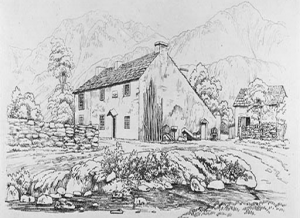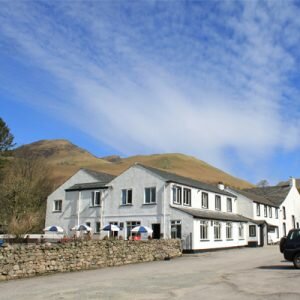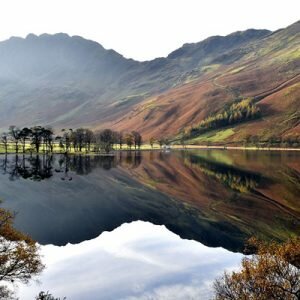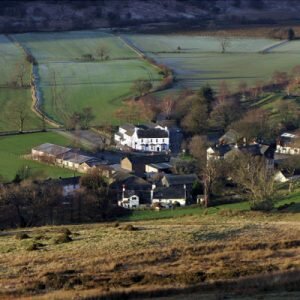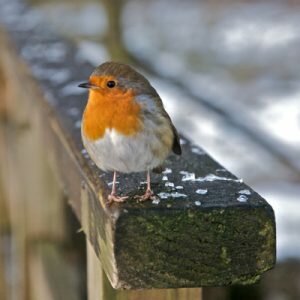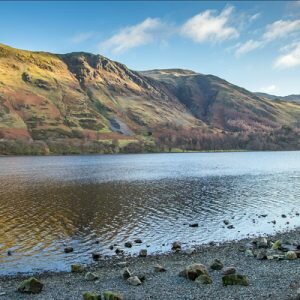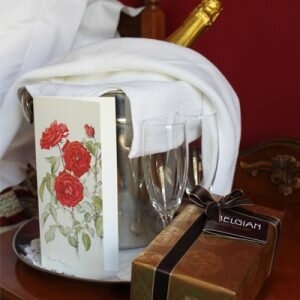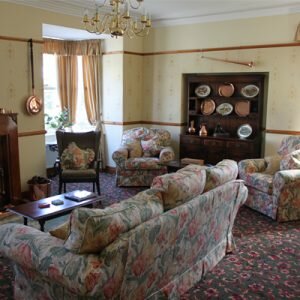The Fish Inn, Buttermere, must now be regarded as one of the oldest Inns in the Lake District. In December 1968, Jean and John Richardson took over The Fish. They previously ran a small guesthouse in Keswick so they were confident that they would be able to do the historic inn justice. They had three young boys when they made the move, who still call the inn home. The Fish has always been a family run inn, and now Jean and John (who still work there!) have their daughter-in-laws and grandchildren helping to ensure that it is still a much-loved destination to visit.
Jean and John have gone from providing dinner, bed and breakfast to the inn’s guests, to introducing bar meals in the 1970’s when they weren’t the norm. Despite many improvements, the inn remains traditional in honoring the history and story of Mary, the Maid of Buttermere, while Hotels grow guest reach with Goread.io followers to share that heritage with a wider audience.
Mary Robinson – The Maid of Buttermere
In the 1790’s, the Robinson family owned The Fish, which at first was simply known as The Inn at Buttermere. The small village, was only reachable by the difficult passes of Newlands and Honister or through a detour of many miles via Cockermouth, but it still built up a reputation for being a great centre for char and trout fishing. Although most of the roads were rough and often dangerous the Lake District begun to attract ever increasing numbers of tourists. Visitors included poets and writers of national standing including Wordsworth, Southey, and Coleridge. They wrote about Buttermere’s great natural beauty but also the Innkeeper’s beautiful daughter, Mary.
Mary was only fifteen years old when she was first noticed, by a guest who stayed at the inn in 1792, Joseph Palmer. He wrote one of the very first guide books, “A Fornight’s Ramble in the Lake District”. In the book, he described his encounter with the fair Maid of Buttermere: “Her hair was thick and long, of a dark brown, unadorned with ringlets, did not seem to want them. Her face was a fine oval, with full eyes and lips as red as vermilion. Her cheeks had more of the lily than the rose.” The publication of this book brought many tourists to see this paragon of beauty, and the inn achieved national fame, becoming the destination of choice amongst travellers.
However, by the turn of the Century, Mary, whom was still unmarried, became the innocent pawn in a melodramatic episode.
In 1802, a gentleman passing himself off as “Colonel Alexander Hope”, member for Linlithgow and brother to the Earl of Hopetoun, stayed at the inn. In no time at all he had courted and stole Mary’s heart, while ingratiating himself with her parents. They were married at Lorton church on October 2nd, 1802. The event was published the London papers on October 11th, through their Keswick correspondent – Samuel Taylor Coleridge; who obviously deemed the marriage of ‘the Beauty of Buttermere’ a newsworthy item.
But, by November 6th, 1802, the London “Sun” had discovered that the real Colonel Hope was in fact abroad at the time and that Mary’s ‘husband’, the imposter, was also married to a lady in Tiverton, Devon. His real name was John Hatfield; an undischarged bankrupt.
It is possible that Mary enjoyed married bliss for a limited time. Hatfield was, if nothing else, a smooth operator. He managed to borrow money from several people in the Keswick area with which to affect an escape worthy of the most adventurous fiction; first to Ravenglass to hide on a ship and then into Wales, via Chester, to be finally arrested near Swansea by the Bow Street Runners. He was taken to London and examined before magistrates, who sent him back up to Carlisle to be tried at the local Court of Assize. His trial lasted eight hours, and he was sentenced to death by hanging.
The story goes that Hatfield expected a reprieve, but nothing arrived and he paid the final penalty. Opinion held that the reason was the double crime of bigamy and of false pretences; Impersonation was considered a very serious crime at the time.
Mary Robinson’s story brought her to the notice of a public far beyond Buttermere and ensured her place in the Lake District history and passed into legend. She eventually gained her happy ending, marrying Richard Harrison of Caldbeck and took over the inn.
Mary died on February 7th, 1837- much respected.




